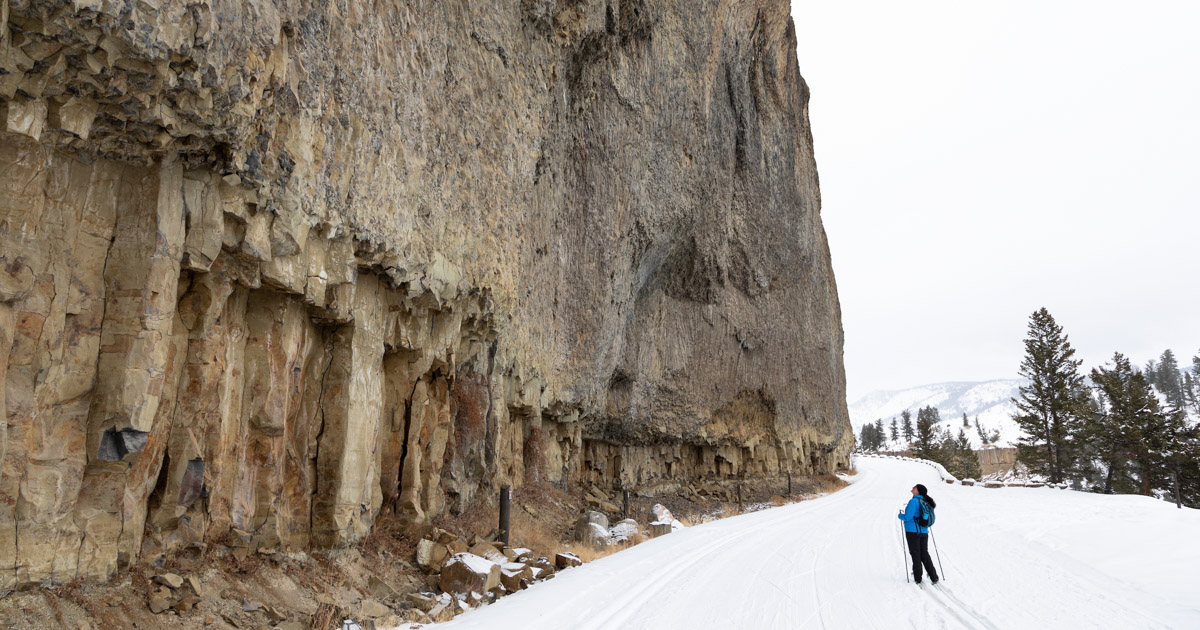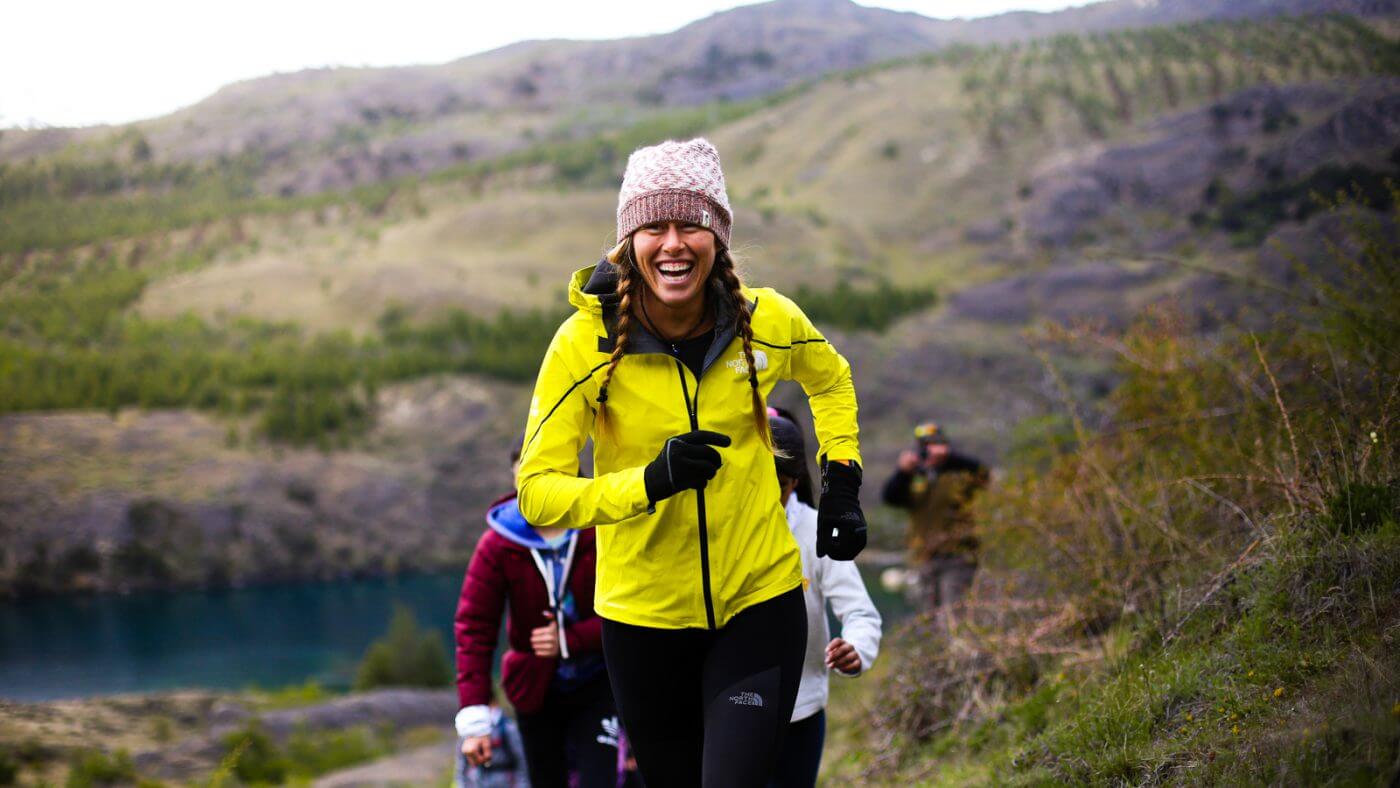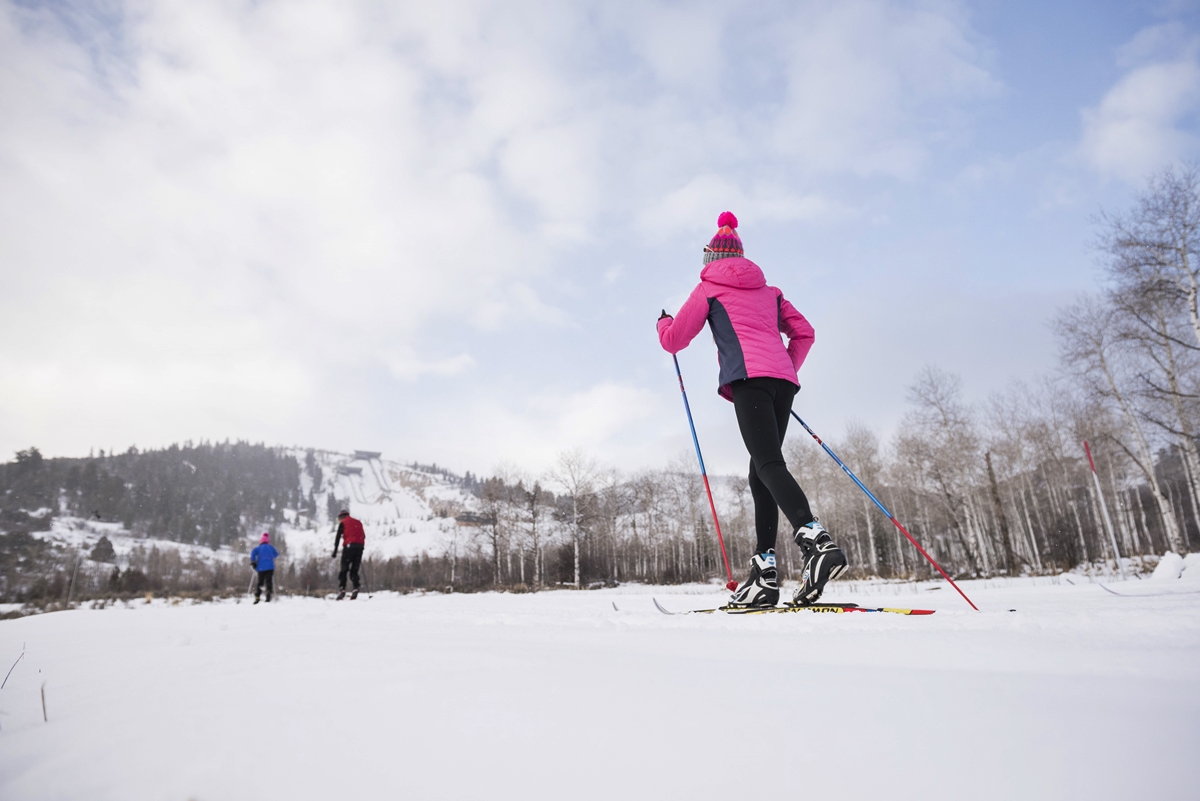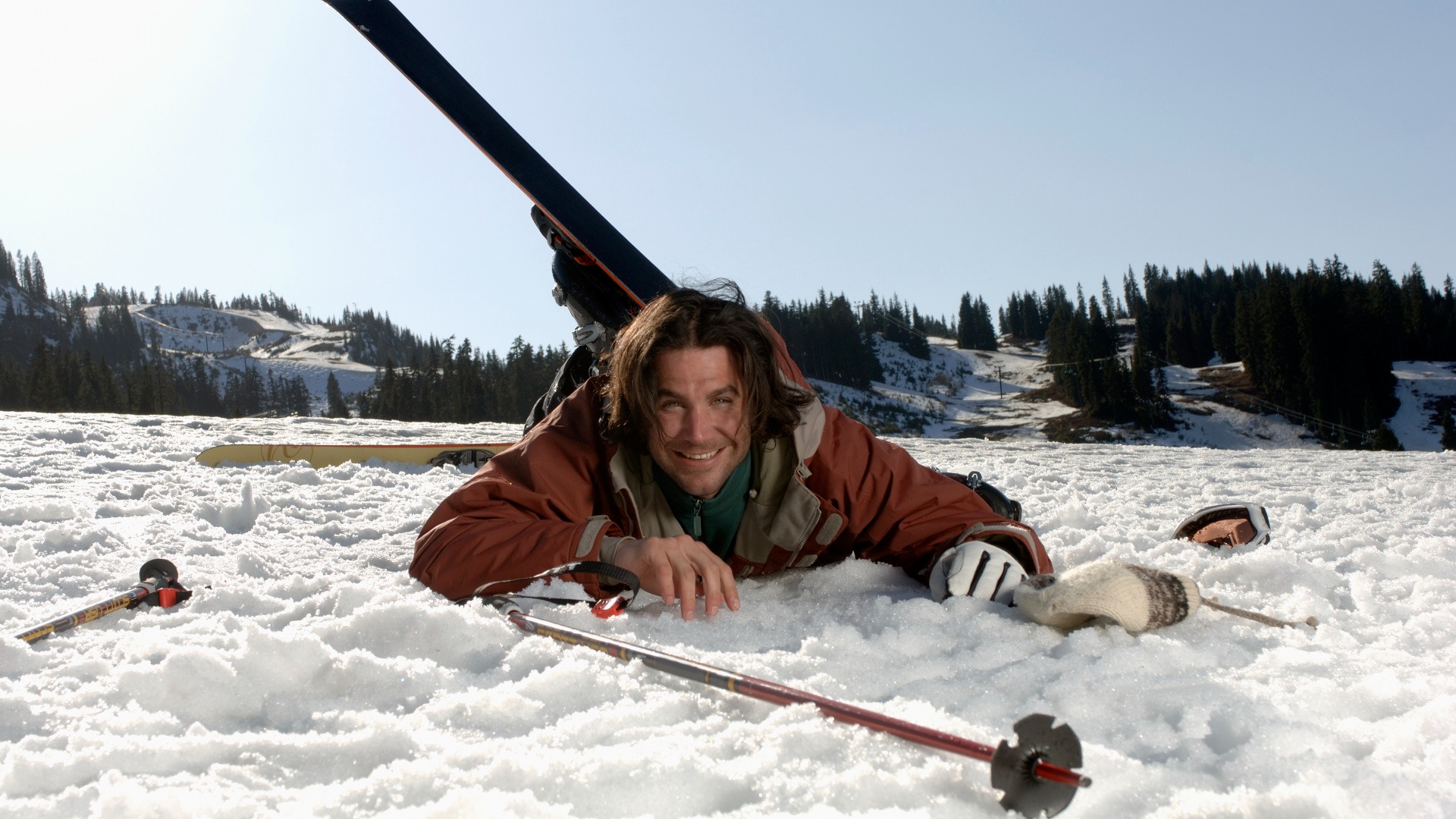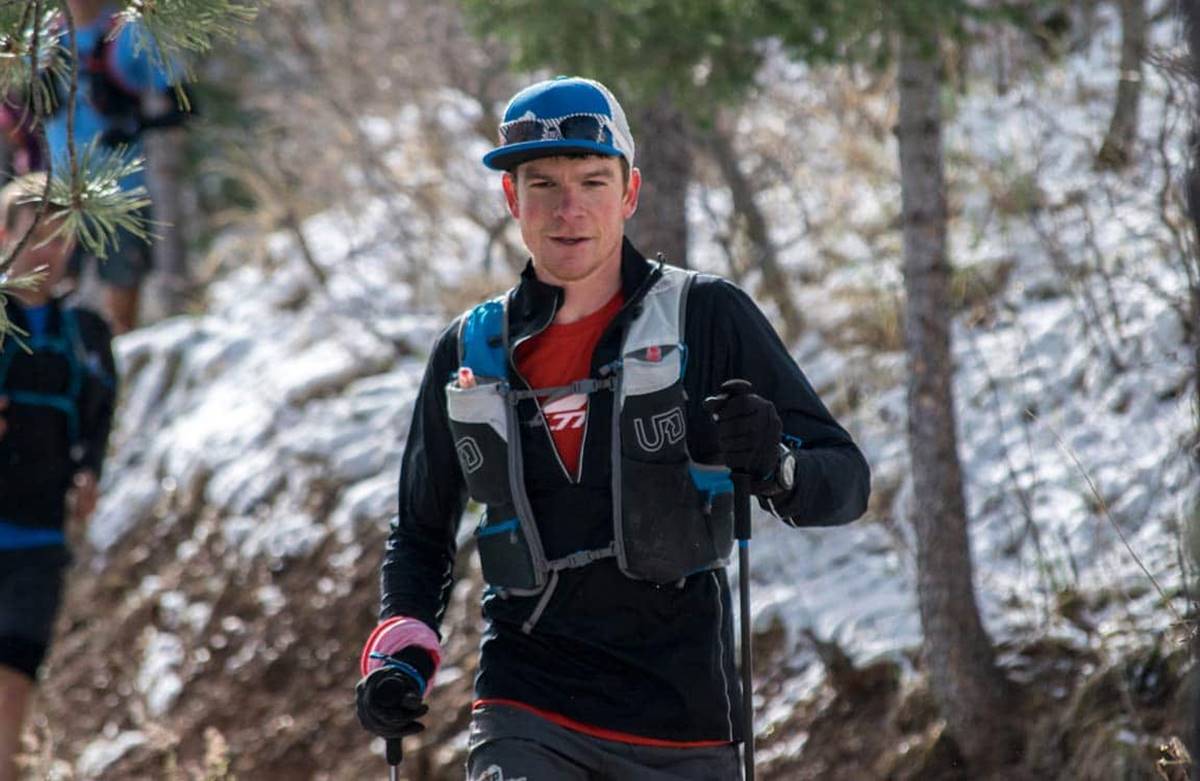

Featured
How To Start Trail Running
Modified: January 22, 2024
Learn how to start trail running with our featured guide. We provide tips, gear recommendations, and training techniques to help you hit the trails with confidence.
Introduction
Trail running is an exhilarating and adventurous sport that allows you to immerse yourself in nature while challenging your physical and mental limits. Unlike running on paved roads, trail running takes you off the beaten path and onto winding trails, through mountains, forests, and rugged terrains. It offers a unique experience, providing a refreshing escape from the hustle and bustle of everyday life.
Whether you are an experienced runner looking for a new challenge or a beginner looking to step up your fitness game, trail running offers a multitude of benefits for everyone. Not only does it provide a full-body workout, but it also offers a mental and emotional escape from the stresses of everyday life. The changing scenery, fresh air, and connection with nature can be a therapeutic experience, leaving you feeling rejuvenated and invigorated.
But where do you start if you’ve never ventured onto the trails before? How do you make the transition from running on pavements to tackling rugged terrains? In this article, we will guide you through the essentials of trail running, from choosing the right trail to preparing your body, and staying safe. So, lace up your trail shoes, grab your water bottle, and let’s dive into the exciting world of trail running!
Benefits of Trail Running
Trail running offers a wide range of benefits that can enhance your physical, mental, and emotional well-being. Here are some of the key advantages of hitting the trails:
- Full-Body Workout: Trail running engages a variety of muscles throughout your body, including your core, legs, and stabilizer muscles. The uneven terrain and constant changes in elevation require more effort and help build strength and endurance.
- Mental Clarity: The serene and natural environment of trail running can have a calming effect on your mind. The sights and sounds of nature help reduce stress, anxiety, and mental fatigue. It provides a mental escape and allows you to focus on the present moment.
- Improved Balance and Coordination: Running on uneven surfaces forces your body to adapt and maintain balance. Regular trail running can help improve your proprioception and coordination, making you more agile in other activities.
- Low-Impact Exercise: Unlike running on concrete or asphalt, trail running is softer on your joints due to the natural cushioning provided by the ground. This makes it an excellent alternative for individuals with joint issues or those looking to minimize impact.
- Nature Connection: Trail running allows you to immerse yourself in stunning natural surroundings. From lush forests to breathtaking mountaintops, you can experience the beauty of nature firsthand and cultivate a deeper appreciation for the outdoors.
- Mental Resilience: Conquering challenging terrains and enduring physical hardships during trail running can strengthen your mental resilience. It teaches you to push through discomfort and overcome obstacles, both on and off the trail.
- Variety and Adventure: Each trail is unique, offering diverse landscapes, obstacles, and terrain. Trail running provides an element of excitement and adventure as you explore new trails and discover hidden gems.
Whether you’re a seasoned runner or just starting your fitness journey, trail running offers an array of benefits for your mind, body, and soul. So, put on your trail shoes, embrace the wilderness, and experience the transformative power of running in nature.
Choosing the Right Trail
Choosing the right trail is essential to ensure an enjoyable and safe trail running experience. Here are some factors to consider when selecting a trail:
- Distance and Difficulty: Consider your fitness level and experience when choosing a trail. Start with shorter, less technical trails if you’re a beginner and gradually progress to longer and more challenging ones. Research the trail’s elevation gain and difficulty rating to match it with your capabilities.
- Terrain and Surface: Different trails have varying types of terrain, including rocky, muddy, or sandy surfaces. Decide whether you prefer a smoother or more rugged trail and choose accordingly. Additionally, consider if you want a trail that offers scenic views, waterfalls, or other natural attractions.
- Trail Accessibility: Look for trails that are easily accessible from your location. Consider factors such as travel time, parking availability, and proximity to amenities like restrooms or water fountains.
- Trail Conditions: Check weather conditions and trail updates before heading out. Rainfall or snow can impact trail conditions and make them more challenging. Take note of any closures or warnings and plan accordingly.
- Safety: Consider your safety while choosing a trail. If you’re a beginner or running alone, opt for well-marked and well-traveled trails. It’s also a good idea to inform someone of your running plans and carry essential safety items like a cell phone, whistle, or personal alarm.
- Local Regulations: Be aware of any specific rules or regulations regarding trail usage. Some trails may require permits, have designated operating hours, or restrict certain activities like biking or dogs. Always respect the rules to ensure the sustainability and enjoyment of the trail for everyone.
Researching and planning ahead will help you find the perfect trail that matches your preferences and abilities. Consult trail guidebooks, online resources, or seek recommendations from local running groups or park authorities. Remember, trail running is about exploring new landscapes and enjoying the beauty of nature, so choose a trail that brings you joy and inspiration.
Essential Gear for Trail Running
When it comes to trail running, having the right gear can make a significant difference in your comfort, safety, and performance. Here are some essential items to consider before hitting the trails:
- Trail Running Shoes: Invest in a pair of trail running shoes that offer good traction, stability, and protection. Look for shoes with lugs on the outsole to grip varied terrain and a durable, protective upper to shield your feet from rocks, roots, and debris.
- Moisture-Wicking Clothing: Opt for moisture-wicking and quick-drying clothing to keep you comfortable on the trails. Choose lightweight and breathable materials that allow for freedom of movement and help regulate body temperature.
- Hydration System: Carry a hydration system, such as a hydration pack, water belt, or handheld water bottle, to stay hydrated during your runs. It’s important to drink regularly, especially on longer or more challenging trails.
- Navigation Tools: Bring a map, compass, or GPS device to help you navigate trails with confidence. Familiarize yourself with the trail route beforehand and be prepared to adjust your route if needed.
- Trail Running Backpack: If you plan to go on longer runs or carry additional gear, consider using a trail running backpack. Look for a lightweight and breathable pack with enough storage capacity for essentials like extra clothing layers, nutrition, and first aid supplies.
- Sun Protection: Protect your skin from harmful UV rays by wearing sunscreen, sunglasses, and a hat. Look for sunscreen that is sweat-resistant and provides broad-spectrum protection.
- First Aid Kit: Carry a small first aid kit with basics like band-aids, blister pads, antiseptic wipes, and pain relievers. It’s always better to be prepared for minor injuries or emergencies on the trail.
- Trail Running Gaiters: Gaiters are protective coverings that prevent debris, rocks, and sand from entering your shoes. They can be especially useful on trails with loose or sandy terrain.
Remember, the gear you choose should match the trail conditions, weather, and your specific needs. It’s essential to test and familiarize yourself with your gear before heading out on longer or more challenging runs. Additionally, don’t forget to listen to your body and adjust your gear as needed to optimize your trail running experience.
Preparing Your Body for Trail Running
Before diving into trail running, it’s crucial to prepare your body for the unique demands of this adventurous activity. Follow these tips to get your body ready for the trails:
- Build Endurance Gradually: Start by incorporating trail running into your routine gradually. Begin with shorter distances and gradually increase your mileage and intensity over time. This will help your body adapt and reduce the risk of injury.
- Strength Training: Include strength training exercises to build the muscles necessary for trail running. Focus on exercises that target your core, glutes, quads, and calves to improve stability, agility, and power.
- Improve Flexibility: Incorporate regular stretching and mobility exercises into your routine to improve flexibility and range of motion. This will help prevent muscle imbalances and reduce the risk of strains or pulls on the trail.
- Practice Hiking and Hills: Trail running often involves inclines and challenging terrain. Prepare your body by incorporating hiking, hill sprints, or stair workouts into your training. This will help build strength in your legs and prepare you for elevation changes during your runs.
- Train on Similar Terrain: If possible, try to train on terrain that mimics the trails you plan to run on. This will help your body get accustomed to the specific demands of the trails, such as uneven surfaces, rocks, and steep descents.
- Cardiovascular Conditioning: Improve your cardiovascular fitness through regular aerobic exercises such as running, cycling, or swimming. Strengthening your heart and lungs will enhance your endurance on the trails.
- Rest and Recovery: Allow your body time to rest and recover between runs. Engage in active recovery activities such as foam rolling, gentle stretching, or yoga to promote blood flow, reduce muscle soreness, and prevent overuse injuries.
- Proper Nutrition and Hydration: Fuel your body with a balanced diet rich in nutrients to support your trail running efforts. Stay hydrated before, during, and after your runs to maintain optimal performance and prevent dehydration.
Remember, everyone’s body is unique, and it’s essential to listen to your body’s signals. If you experience pain or discomfort, take a break, and allow yourself time to recover. By gradually preparing and conditioning your body, you’ll be better equipped to tackle the challenges of trail running and enjoy the journey ahead.
Trail Running Techniques and Tips
Trail running requires some adjustments to your running technique and mindset compared to running on paved surfaces. Here are some techniques and tips to help you navigate the trails with confidence:
- Shorten Your Stride: On the trails, it’s best to take shorter, quicker strides to maintain stability and adapt to changes in terrain. This will help prevent tripping or slipping on uneven surfaces.
- Keep Your Eyes on the Trail: Pay close attention to the trail ahead to anticipate obstacles, rocks, tree roots, or other hazards. Scan the trail about 10-15 feet in front of you to give yourself enough time to react and adjust your footing.
- Use Your Arms: Engage your arms and use them for balance and stability. Keep them slightly bent and swing them naturally in coordination with your stride.
- Vary Your Foot Placement: Practice agile footwork by varying your foot placement. This includes landing on rocks or tree roots with your forefoot or midfoot to maintain control and prevent slipping.
- Run by Effort, Not Pace: Instead of focusing on pace, monitor your effort level while trail running. The varying terrain and elevation changes may cause your pace to fluctuate, but maintaining a consistent effort is key.
- Embrace the Hills: Uphills and downhills are an integral part of trail running. Use shorter strides and maintain an upright posture while ascending, and lean slightly forward and control your speed while descending. Embrace the challenge and enjoy the change in intensity.
- Practice Descending Techniques: When running downhill, it’s crucial to lean forward slightly to maintain balance and control. Use your arms for counterbalance and take shorter steps to avoid putting excessive strain on your joints.
- Stay Present and Mindful: Trail running requires heightened awareness of your surroundings. Stay present, stay focused, and be mindful of your footing, potential hazards, and the beauty of nature around you.
- Experiment with Pacing: Trail running is not solely about speed. Allow yourself to slow down, walk on steeper inclines, or take breaks if needed. It’s about enjoying the journey and finding your own rhythm.
- Respect Nature and Leave No Trace: Preserve the environment by following the principles of Leave No Trace. Avoid littering, stay on designated trails, and respect local wildlife and vegetation.
With practice, you’ll develop your own techniques and strategies that work best for you. Embrace the joy of trail running, learn from each run, and continue to refine your skills as you explore new trails and push your limits.
Staying Safe on the Trails
When it comes to trail running, safety should always be a top priority. Here are some essential tips to help you stay safe while enjoying your time on the trails:
- Be Prepared: Before heading out, ensure you’re prepared for your trail run. Familiarize yourself with the route, trail conditions, and any potential hazards. Carry essential items like a map, compass, headlamp, extra clothing layers, and a fully charged cell phone.
- Trail Buddy: Whenever possible, run with a companion. Running in pairs or groups not only adds to the fun but also provides an extra layer of safety in case of an emergency.
- Inform Others: Let someone know about your planned route and estimated return time. This ensures that someone is aware of your whereabouts and can take appropriate action if needed.
- Stay Hydrated: Carry enough water or sports drinks to keep yourself hydrated throughout your run. Consider the distance and intensity of the trail and adjust your water intake accordingly.
- Weather Awareness: Check the weather forecast before heading out and take appropriate precautions. Be prepared for sudden changes in weather conditions and dress accordingly.
- Trail Etiquette: Be courteous to other trail users. Yield to hikers and respect their right of way. Pass on the left and alert others with a friendly greeting or a bell when approaching from behind.
- Watch Your Step: Stay focused and be mindful of your footing. Keep an eye out for rocks, roots, and other obstacles on the trail. Take extra caution on slippery or uneven surfaces.
- Maintain Visibility: If running at dawn, dusk, or in low-light conditions, wear reflective gear or carry a headlamp to improve your visibility to other trail users or vehicles.
- Wildlife Encounter: Familiarize yourself with the local wildlife and how to react in case of an encounter. Keep a safe distance, avoid sudden movements, and make noise to alert animals of your presence.
- Trust Your Instincts: If you sense something is off or feel uncomfortable in any situation, trust your instincts and take appropriate action. It’s better to be cautious and make decisions that prioritize your safety.
By following these safety guidelines, you can minimize risks and ensure an enjoyable and safe trail running experience. Remember, your safety is in your hands, so always be mindful, prepared, and aware of your surroundings as you explore the beautiful trails.
Finding Trail Running Communities and Events
Connecting with like-minded trail runners and participating in trail running events can enhance your trail running experience and provide opportunities for growth and camaraderie. Here are some ways to find trail running communities and events:
- Local Running Groups: Search for local running groups or clubs in your area that specialize in trail running. These groups often organize weekly group runs, workshops, and social gatherings. Joining these communities can provide valuable support, motivation, and knowledge.
- Online Forums and Social Media: Explore online forums, websites, and social media platforms dedicated to trail running. Engage in discussions, ask questions, and connect with fellow runners. These platforms also provide information about upcoming events, trail recommendations, and gear reviews.
- Trail Running Events: Look for local, regional, or national trail running events. These events cater to different skill levels and offer various distances, from shorter races to ultra-marathons. Participating in these events can be a great way to challenge yourself, meet other trail runners, and explore new trails.
- Trail Running Guides and Books: Explore trail running guides and books focused on your region or specific trails. These resources often contain valuable information about popular trails, recommended routes, and local trail running communities.
- Trail Running Apps: Utilize trail running apps that provide trail maps, route suggestions, and the ability to connect with other runners. These apps may also include features like tracking, elevation profiles, and user reviews of trails.
- Volunteer Opportunities: Consider volunteering at trail races or events. Volunteering allows you to be part of the trail running community, support fellow runners, and gain insights into race organization.
- Trail Running Retreats: Explore the option of attending trail running retreats or camps. These multi-day experiences often include guided runs on scenic trails, training workshops, and opportunities to connect with other passionate trail runners.
Finding and engaging with trail running communities and events can provide valuable support, friendship, and inspiration in your trail running journey. Remember to respect trail etiquette, contribute positively to the community, and embrace the collective spirit of trail running as you connect with other trail runners and participate in events.
Conclusion
Trail running is more than just a hobby or a form of exercise – it’s a transformative experience that allows you to connect with nature, push your limits, and discover your inner strength. Whether you are a beginner or an experienced runner, venturing onto the trails opens up a world of adventure, mental clarity, and physical fitness.
In this article, we explored the benefits of trail running, from the full-body workout it provides to the mental and emotional escape it offers. We discussed the importance of choosing the right trail to match your abilities and preferences, along with the essential gear and equipment you need to stay safe and comfortable on the trails.
We also outlined the steps to prepare your body for trail running, focusing on endurance, strength, flexibility, and proper nutrition. Additionally, we delved into trail running techniques and tips to help you navigate the varied terrain and make the most of your experience.
Furthermore, we emphasized the significance of staying safe on the trails by being prepared, aware of potential hazards, and respecting nature and other trail users. Lastly, we highlighted the importance of finding trail running communities and events to enhance your enjoyment of this exhilarating sport.
As you embrace the world of trail running, remember to embrace the journey, savor the beauty of nature, and listen to your body. Each trail run is an opportunity for growth, adventure, and self-discovery. So, lace up your trail shoes, venture out onto the trails, and let the transformative power of trail running guide you on an incredible journey.
